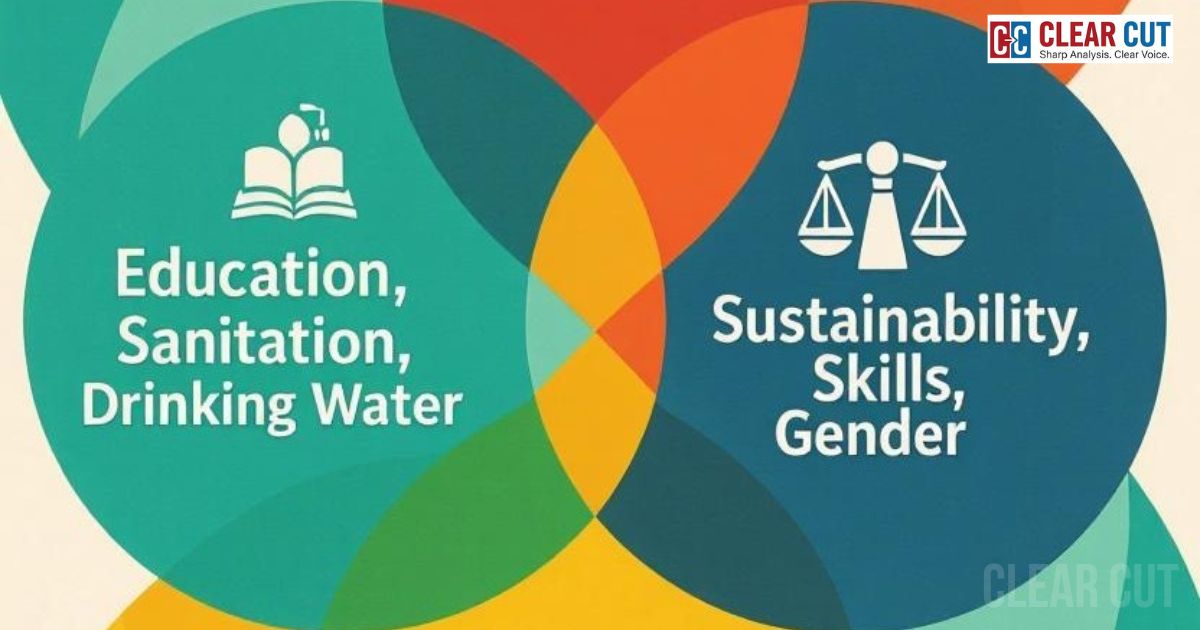Photo Credit: Facebook @Captured moments
Clear Cut Livelihood Desk
New Delhi, UPDATED: Aug 29, 2025 04:15 IST
Written By: Janmojaya Barik
When Bhutan celebrated the birth of its crown prince by planting 108,000 trees, it was more than paying tribute to a royal child. It was testament to the world what is truly important in an era marked by ecological disaster. In a world where fireworks, military parades, and marble monuments tend to greet new heirs, Bhutan’s was low-key yet deep, earthbound, community-rooted, and expressive of a country whose existence is defined by its forests.
The meaning of the number itself was not an accident. For Buddhists, the number 108 holds profound religious significance, symbolizing purity from defilements and the completeness of life. The addition of three zeros amplified this energy, rendering it both reverent and benevolent in nature. Residents throughout the kingdom planted 82,000 of these trees, while officials and volunteers, including the Prime Minister and opposition members, planted another 26,000. The species was adapted according to local ecology, from oak to pine to teak, to ensure that the new trees would flourish where they were planted. “To tend these saplings is like to tend the prince himself,” one of the organizers said, reminding all that love of the earth is not distinguishable from love of the future generation.
This gesture would have been strictly ceremonial if it were not in line with Bhutan’s age-old philosophy of protecting the environment. The nation is the globe’s sole carbon-negative country. Its forests blanket nearly 70 percent of its territory and sequester six million tons of carbon dioxide annually, and Bhutan only releases around 1.5 million tons. Its constitution dictates that the nation must have at least 60 percent of its area in perpetuity under forest cover. Hydropower from its mountain streams provides clean electricity to the country and for export, with low emissions, facilitating economic growth. These are not catchphrases but facts that have enabled a tiny Himalayan kingdom to achieve what much larger and richer countries have not been able to do.
Tree planting for the prince was thus more than rhetoric; it was tradition. It expressed a national culture in which environmental preservation was not a nicety to be added on but a founding pillar of identity and policy. While it is currently a time when deforestation is rife across much of the globe, the people of Bhutan have organized to sow new life, linking a royal festival to a communal act of regeneration. It was as much a civic as a religious ceremony. Trees are venerated by Buddhism as representation of compassion and life. The “Tendrel” ritual, performed alongside the planting, was laced with prayers and blessings, placing ecological responsibility within the context of cultural significance.
Symbolism has not been sufficient for the government. In 2023, Bhutan initiated the Bhutan Climate Fund at COP28, which is geared to aggregate its net negative emissions into an open system that can be sold as carbon credits. This step acknowledges that, although Bhutan’s commitment is cultural and moral, it must also be financially sustainable in today’s world. A national carbon registry and transparent terms of market participation have been put in place to guarantee performance and forest management policies under the REDD+ scheme keep conservation in balance with rural livelihoods.
What is significant about Bhutan’s model is not only that it has laws, rituals, and funds in place, but that they are harmonious with each other. Cultural identity supports legal prescriptions; government policy is mirrored in community action; economic planning respects ecological boundaries. When Bhutan plants trees for a prince, it is not a token because the day-to-day reality of the country lends it substance.

Photo Credit: Buddhistdoor
The world, however, tends to slip into a gap between the promise and practice. Countries make commitment to being carbon neutral by 2050 but go ahead to authorize new coal plants. Governments initiate massive tree-planting campaigns which result in saplings drying out without water after a year. Against this, Bhutan’s action finds credibility because it seems to be part of an ideology that delivers. Its forests are not a stage prop but a living reality; its carbon negativity is not aspirational but measurable.
What can other countries learn from this? Not that all monarchical states need to commemorate royal births with saplings, but that celebration and milestone can be attached to values that last. Fireworks fade; marble memorials erode; but trees grow, take up carbon, provide habitation for wildlife, and give shade to generations to come. Sowing 108,000 of them is a reminder that legacy is not quantifiable in stone or metal but in life that lasts longer than the banners come down.
Bhutan’s royal tree planting can be easily dismissed as a charming, a tiny Himalayan kingdom making a symbolic gesture. However, in a desperate world looking for models of integrity in climate policy, it is not just charming – it is worthy of emulation. If a country of fewer than a million people, resource-poor and landlocked, can stay carbon-negative while linking cultural pride to environmental stewardship, then excuses elsewhere sound hollow. Birth of a prince was the event, but beneath the celebration was life itself – life breathing, growing, grounding a delicate planet.




